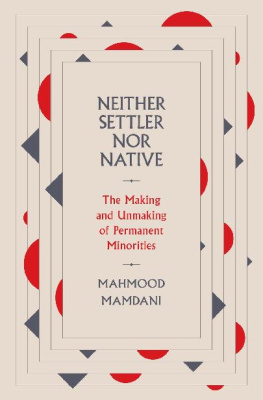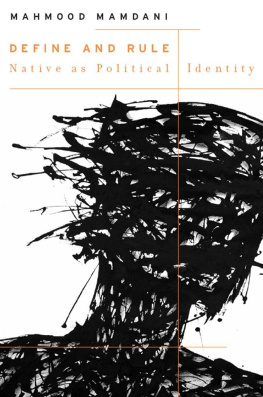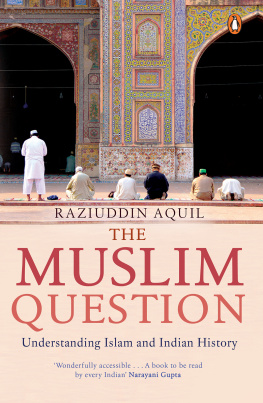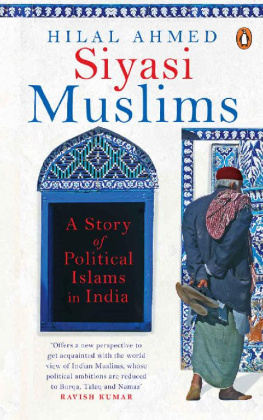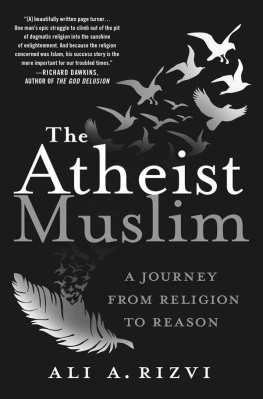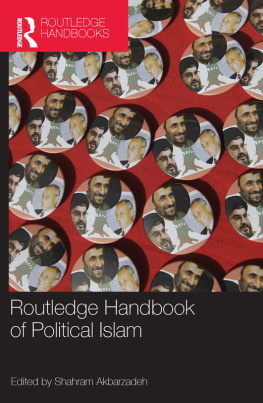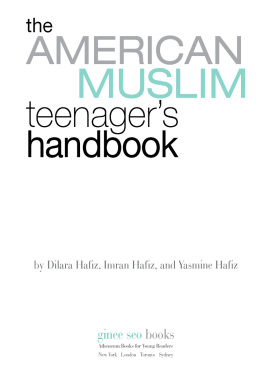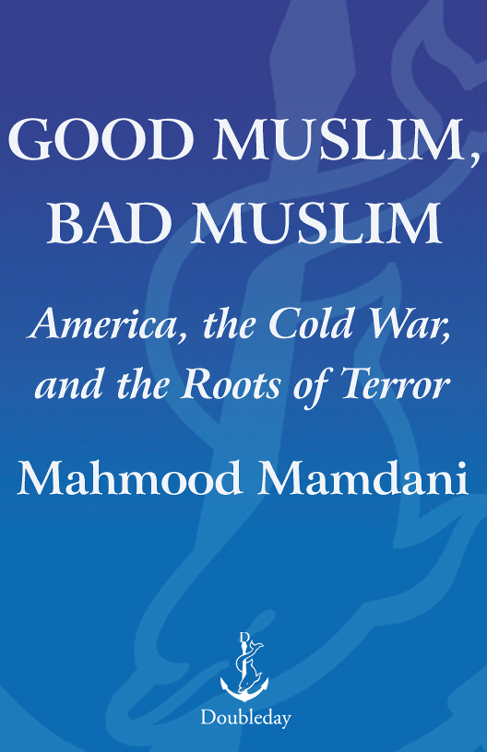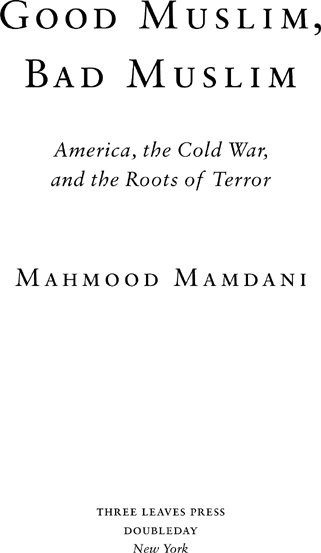Acknowledgments
This book grew out of a talk at Riverside Church on the Upper West Side of New York City in the weeks after 9/11. To bear an identifiably Muslim name then was to be made aware that Islam had become a political identity in post-9/11 America. In the talks that took placefrom New York and Chicago in the United States to Kampala and Durban in AfricaI set about trying to understand the modern tendency to politicize culture and, in that context, the forging of political Islam and political terror during the Cold War.
Along that journey, I got invaluable help from three friends, Talal Asad of City University of New York, Tim Mitchell of New York University, and Bob Meister of the University of California at Santa Cruz. If I have made mistakes in spite of their careful guidance, the fault is surely only mine. The same cannot be said of my graduate students who made the journey with me and who sometimes anticipated a discovery, and often joined me in making one: Suren Pillay, Brenda Coughlin, and Yogesh Chandrani gave research assistance beyond the call of duty, even friendship. Finally, many thanks to my editor, Shelley Wanger of Pantheon, for insisting that I leave aside all circumlocutions and face the reader directly.
Without loved ones, writing would surely be too lonely an exercise to bear for long. Mira, as always, continues to nourish with love and inspire by example, teaching how to make things happen, no matter the odds. Ammy, Daddy, and Anis gave Zohran the comfort of home in Kampala and made it possible for me to write for extended stretches.
My mother, Ammy, was an ongoing inspiration for this book. A woman of such strong religious conviction that as a child she went to a Catholic convent school in the mornings and an Islamic madrassah in the afternoons; she remained incessantly curious about the world in spite ofmaybe because ofthe fact that she had no more than four years of formal schooling; she combined two great virtues, to struggle for justice no matter what the odds and to remain fair-minded and full of empathy while doing so. I hope this book will help celebrate Ammys life and make some of its lessons available to, among others, our son Zohran, and his mates in Kampala and Capetown, New York and New Delhi and Dar-es-Salaam. I close with the comforting thought that, together, they will no doubt remake the world they inherit from us.
New York
December 2003
Introduction
M ODERNITY AND V IOLENCE
W e have just ended a century of violence, one possibly more violent than any other in recorded history: world wars and colonial conquests; civil wars, revolutions, and counterrevolutions. Although the magnitude of this violence is staggering, it does not astound us.
The modern political sensibility sees most political violence as necessary to historical progress. Since the French Revolution, violence has come to be seen as the midwife of history. The French Revolution gave us terror, and it gave us a citizens army. The real secret behind Napoleons spectacular battlefield successes was that his army was not made up of mercenaries but patriots, who killed for a cause, inspired by national sentimentwhat we have come to recognize as the civic religion of nationalism. Reflecting on the French Revolution, Hegel wrote that man was willing to die for a cause of greater value to him than life itself. Maybe Hegel should have added: man is also willing to kill for such a cause. This, I think, is truer of our times than it was in the past.
The modern sensibility is not horrified by pervasive violence. The world wars are proof enough of this. What horrifies our modern sensibility is violence that appears senseless, that cannot be justified by progress.
Such violence gets discussed in two basic ways: in cultural terms for a premodern society and theological terms for a modern society. The cultural explanation always attributes political violence to the absence of modernity. On a world scale, it has been called a clash of civilizations. Locallythat is, when it does not cross the boundary between the West and the restit is called communal conflict, as in South Asia, or ethnic conflict, as in Africa.
Political violence in modern society that does not fit the story of progress tends to get discussed in theological terms. The violence of the Holocaust, for example, is explained as simply the result of evil. Like premodern culture, evil too is understood outside of historical time. There is huge resistance, both moral and political, to exploring the historical causes of the Nazi genocide. By seeing the perpetrators of violence as either cultural renegades or moral perverts, we are unable to think through the link between modernity and political violence.
The Modern State and Political Violence
The year 1492 was the onset of the European Renaissance and the birth of political modernity. It is also the year Christopher Columbus set sail for the New World and the year the armies of King Ferdinand and Queen Isabella conquered the city-state of Granada, then seen as the last Muslim stronghold in western Christendom. Thus, 1492 stands as a gateway to two related endeavors: one the unification of the nation, the other the conquest of the world.
The unification of the nation led to the birth of the nation-state. Today, political modernity is equated with the beginning of democracy, but nineteenth-century political theoristsnotably Max Weberrecognized that political modernity depended upon the centralized state monopolizing violence. The nation-state centralized the formerly dispersed means of violence into a single fist, capable of delivering an awesome blow to all enemies of the nation, internal and external. It was also the political prerequisite for a civil society.
Europe on the threshold of political modernity thought of the nation in terms of culture and race. In the Spain of Ferdinand and Isabella, the nation was first and foremost Christian. The unification of Spain began with an act of ethnic cleansing: 1492 was also the year Ferdinand and Isabella signed the Edict of Expulsion, designed to rid Spain of its Jews. The unified Spanish state gave its Jews a stark choice: baptism or deportation. It is estimated that about seventy thousand Spanish Jews converted to Christianity and remained in Spain, only to be plagued by the Inquisition, which accused them of insincerity. Of the remaining 130,000, an estimated 50,000 fled to the North African and Balkan provinces of the Ottoman empirewhere they were warmly welcomedand about 80,000 crossed the border into Portugal. The expulsion from Spain came at the close of a century that had witnessed the expulsion of Jews from one part of Europe after another. In 1499, seven years after the Edict of Expulsion, the Spanish state gave its Muslims the same choice: convert or leave.


